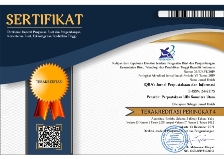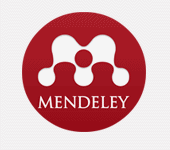Klasifikasi online dan google
Abstract
The purpose of this paper is to examine challenges facing bibliographic classification at both the practical and theoretical levels. At the practical level, libraries are increasingly dispensing with classifying books. At the theoretical level, many researchers, managers, and users believe that the activity of “classification” is not worth the effort, as search engines can be improved without the heavy cost of providing metadata.
Full Text:
PDFReferences
Frohmann, B. (1983). Cataloging & Classification Quarterly. Vol. 4 No. 1, pp. 11-27.
Frohmann, B. (1990). “Rules of indexing: a critique of mentalism in information retrieval theory”, Journal of Documentation, Vol. 46 No. 2, pp. 81-101.
Hjørland, B. (2008). “What is knowledge organization (KO)?”. Knowledge Organization, Vol. 35 Nos 2/3, pp. 86-101.
Leydesdorff, L. (2006). “Can scientific journals be classified in terms of aggregated journal-journal citation relations using the Journal Citation Reports?”, Journal of the American Society for Information Science and Technology, Vol. 57 No. 5, pp. 601-13.
Salton, G. (1996). “Letter to the editor. A new horizon for information science”,Journal of the American Journal for Information Science, Vol. 47 No. 4, p. 333.
Soergel, D. (2009). “Digital libraries and knowledge organization”, in Kruk, S.-R. and McDaniel, B. (Eds), Semantic Digital Libraries, Springer, Berlin.
Villen-Rueda, L., Senso, J.A. and Moya-Anegon, F. (2007). “The use of OPAC in a large academic library: a transactional log analysis study of subject searching”, The Journal of Academic Librarianship, Vol. 33 No. 3, pp. 327-37.
DOI: http://dx.doi.org/10.30829/iqra.v10i02.542
Refbacks
- There are currently no refbacks.
Copyright (c) 2016 Irma Devi Lestari

This work is licensed under a Creative Commons Attribution-ShareAlike 4.0 International License.
IQRA': JURNAL PERPUSTAKAAN DAN INFORMASI
Perpustakaan Universitas Islam Negeri Sumatera Utara
Jalan Willem Iskandar Pasar V Medan Estate
20371
Medan - Sumatera Utara






